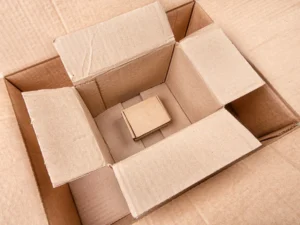In the corrugated packaging industry, precise measurement and dimensioning of corrugated boxes are crucial to ensuring product protection and efficient logistics. The dimensions of corrugated boxes are typically classified into three categories: internal dimensions, external dimensions, and manufacturing dimensions (also referred to as processing dimensions).
Understanding how to convert between these dimension is key to achieving accurate sizing for production and transportation purposes.
The Relationship Between Internal, External, and Manufacturing Dimensions
- External Dimensions = Internal Dimensions + Thickness of Two Corrugated Sheets
- External Dimensions = Manufacturing Dimensions + Thickness of One Corrugated Sheet
In theory, these formulas guide the relationship between different types of dimensions. However, when applying these in practice, it’s essential to account for various factors such as material thickness and production tolerance.

Key Considerations When Determining Corrugated Box Dimensions
1. Dimensions Provided Directly by the Customer
When a customer provides the dimensions of a corrugated box, it is critical to clarify whether the measurements are for internal dimensions or external dimensions. This distinction is important because both internal and external dimensions cannot be specified at the same time. Due to the variable thickness of the corrugated board and manufacturing constraints, either internal or external dimensions should serve as the final inspection reference. Customers will inspect based on the provided dimension type during the quality check process.
2. Determining Dimensions from a Sample Box
In cases where the customer provides a sample box, which is often used and may be deformed, directly measuring length and width can be inaccurate. The most reliable method involves using the slot width of the box.
- Step 1: Unfold the sample box and measure the width of the slot.
- Step 2: Measure the flap dimensions on both the length and width panels.
- Step 3: Measure the thickness of the corrugated board.
Using this method, the manufacturing dimensions can be calculated as follows:
- Length Manufacturing Dimension = Slot Width + Flap Size (Length Panel)
- Width Manufacturing Dimension = Slot Width + Flap Size (Width Panel)
3. Designing Boxes Based on Product Dimensions
When designing corrugated boxes for a specific product, it’s typically best to begin with the internal dimensions. This ensures that the product will fit securely inside the box. The following factors should be considered:
- The product’s characteristics and shape.
- The arrangement of items inside the box (e.g., whether the box will hold a single item or multiple items arranged together).
- The dimensions of cushioning materials or internal inserts for protection.
- Equipment limitations or manufacturing constraints.
In general, the internal dimensions should be calculated by adding 3-5mm to the largest external dimension of the product. Once the internal dimensions are determined, they can be converted to external dimensions to optimize space utilization within standard shipping containers. This approach helps prevent any issues related to box dimensions that could affect container loading and transportation efficiency.



